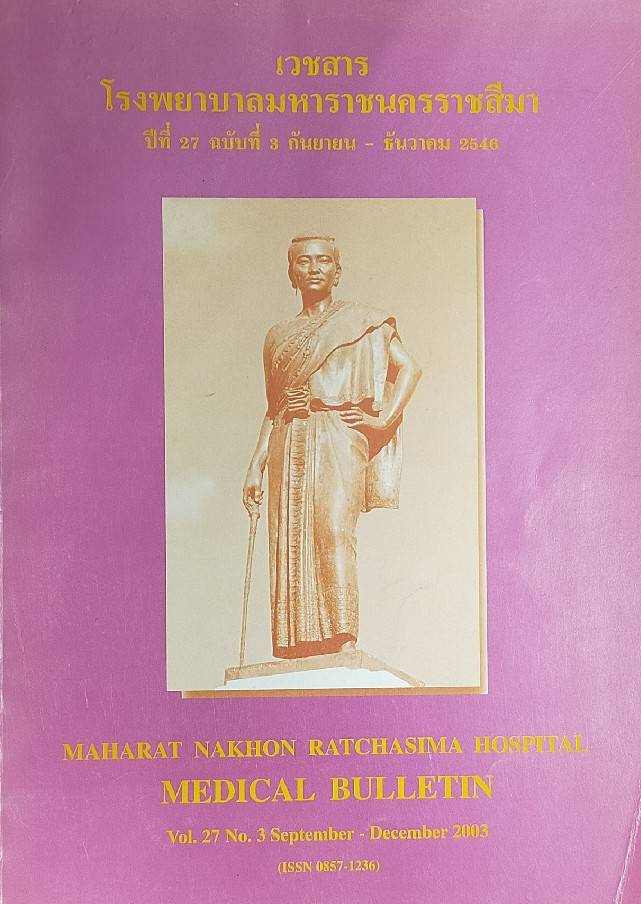Efficacy of the newly developed restrain pad of Maharat Nakhon Ratchasima Hospital
Main Article Content
Abstract
The aim of usage of restrain pad is to protect the pats from physical injuries and the medical equipment from damage. Aim: To evaluation the efficacy of the newly developed restrain pad as the method of risk management in term of patient safety project of Maharat Nakhon Ratchasima Hospital. Material & Methods: To request the health provider of Maharat Nakhon Ratchasima Hospital to fill the questionnaires in September 2003. Results: 431 sets of questionnaires were responded (96.2%). Female was 95.8% and mean age was 34.88+8.97 years (range 22-57 years). 59.6% werc registered nurses. 80.28% were worked in surgical, medical and orthopedic wards. The indication for using of the restrain pad was agitagitation, non-compliance and/or confusing putients. The efficacy and satisfaction were evaluated, fit size 80% material 80%, casy to clean 69.1%, convenient to use 82.6%, good restrain function 81.2%, no harm to patient 84.2%, and good practicability 82.4%, Conelusion: The new restrain pad of Maharat Nakhon Ratchasima Hospital was fit, more practical, and less harrul It was proper to be role model for other hospitals
Article Details

This work is licensed under a Creative Commons Attribution-NonCommercial-NoDerivatives 4.0 International License.
References
สุพร ดนัยดุษฎีกุล. การบริหารจัดการกับความเสี่ยง: การพลัดตกหกล้ม. ใน: เรณู อาจสาลี, อรพรรณ โตสิงห์, บรรณาธิการ. พยาบาลกับการบริหารความเสี่ยงในผู้ป่วยศัลยกรรม. กรุงเทพฯ: บริษัท แอลทีเพรส จำกัด 2546; หน้า 143-50.
Ignatavicius D. Do you help staff rise of the fall-prevention challenge? Nurs manage 2000; 31 : 27-30.
Huda A, Wise LC. Evolution of compliance with a fall-prevention program. J Nurs care qual 1998; 12: 55-63.


